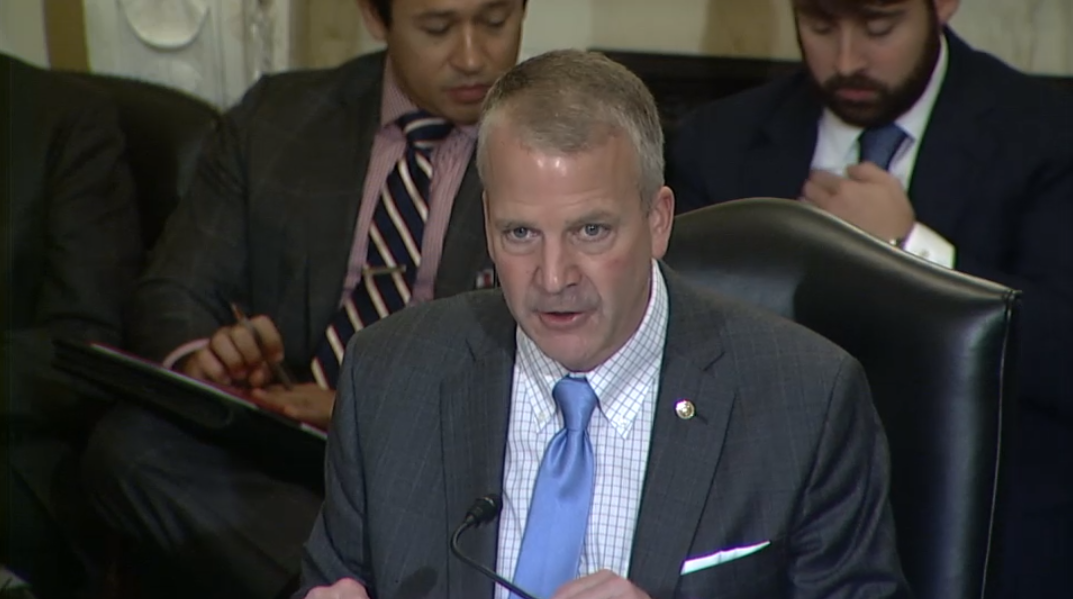ICYMI: Sullivan Convenes First Hearing as Readiness Subcommittee Chairman
Air Force Leaders Optimistic, Anticipate Continued Progress in Face of Readiness Challenges
WASHINGTON, DC – Earlier this month, U.S. Senator Dan Sullivan (R-AK) held his first hearing as the new chairman of the Senate Armed Services Subcommittee on Readiness and Management Support to explore the Air Force’s efforts to improve its readiness – which has steadily declined over several decades.
Senator Sullivan convened the hearing nearly six months since the full Senate Armed Services Committee heard testimony from the Air Force on its current posture in support of the Fiscal Year 2019 budget. He stated, “In those six months a lot has happened. The National Defense Authorization Act was passed with $716 billion in authorized funding. And it didn’t get a lot of press, but 87 U.S. senators voted for that bill…a very bipartisan effort to rebuild our military.”
Sullivan Convenes Hearing on United States Air Force Readiness (click image or here to watch).
Senator Sullivan continued, “the Air Force of today looks, in some respects, very much like the Air Force of yesterday. And that’s not a compliment. For instance, the average Air Force aircraft is 28 years old. And since Desert Storm, we have 58 percent fewer combat coated fighter squadrons. While this is not a modernization hearing, it is a readiness hearing. And unless we modernize our Air Force for the future, we will put lives at risk, both, on the ground, and in the air in terms of readiness.”
Secretary of the Air Force Heather Wilson said the service is focusing on four elements for readiness recovery: people, readiness, training and cost effective maintenance and logistics. The service’s end strength has increased to 685,000 as a result of timely Congressional appropriations. The Air Force is increasing pilot production from training 1,160 pilots in FY 2017 to 1,311 in FY 2019, and moving to about 1,500 pilots by FY 2022.
Of the bolstered pilot production, Secretary Wilson said, “If we’re able to do that and achieve our objectives on retention, we will recover the pilot shortage by 2023, where we will be 95 percent manned.”
Senator Sullivan also raised concerns about the readiness of aircraft in the Air Force fleet, specifically the beleaguered F-35, stating that earlier in the week Secretary of Defense Jim Mattis ordered the Air Force and Navy to get mission capable rates up to 80 percent. Senator Sullivan asked about the disparity between military aircraft and commercial aircraft, noting that Delta Airlines has a readiness rate around 86 percent for their fleet.
“Why is there such a disparity between military aircraft that are brand new and commercial aircraft,” Senator Sullivan asked. “I know it’s a complex aircraft …but it does seem to me kind of ludicrous that we get new aircraft off the production line and within a month they’re at 65 percent readiness.”
John Pendleton, director, Defense Capabilities and Management, United States Government Accountability Office, responded that the Air Force focused too much on F-35 production rather than sustaining the aircraft. He said “it’s causing problems now. The depots are already several years behind. Parts are a problem. And it’s going to be difficult to achieve those kinds of mission capability rates.”
Secretary Wilson and Pendleton testified before the subcommittee along with Chief of Staff of the Air Force General David Goldfein.
Despite lingering challenges, Secretary Wilson stated in her prepared remarks that “the Air Force is more ready for major combat operations today than we were two years ago. That said, we have a long way to go to restore the readiness of the force to win any fight, any time.”
###
Next Article Previous Article

